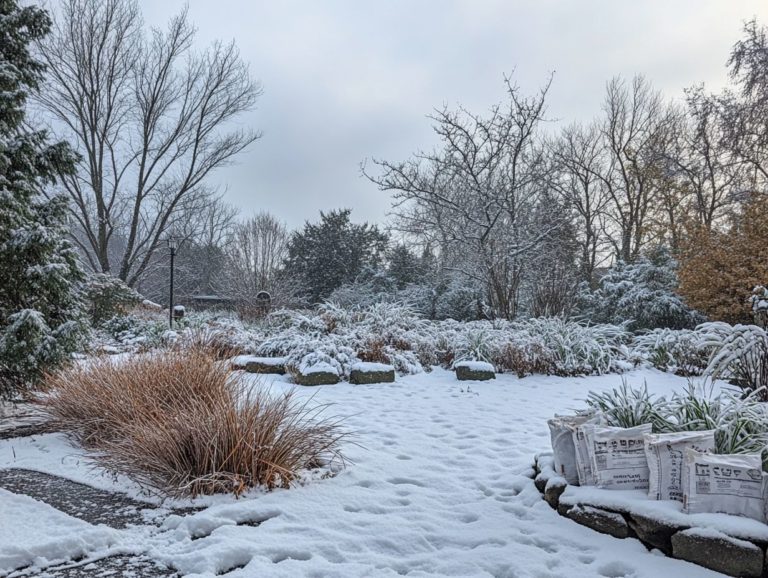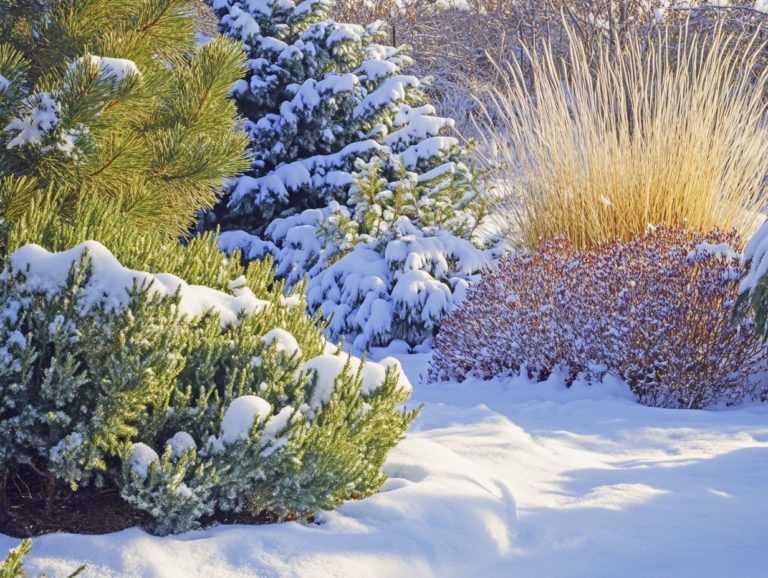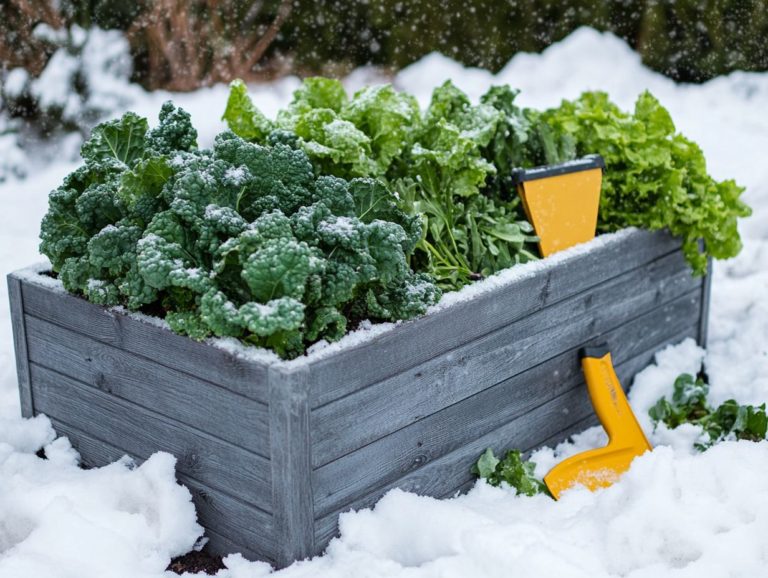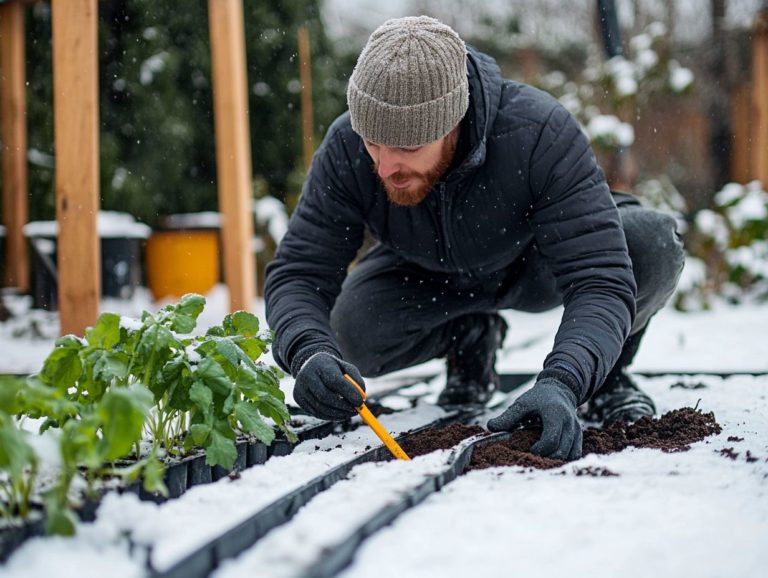How to Select Cold-Hardy Flowers?
When gardening in cooler climates, selecting the right flowers is crucial. Cold-hardy flowers not only survive but thrive in lower temperatures, infusing your landscape with vibrant color even when frost makes its presence felt.
This article delves into what truly defines a cold-hardy flower. It outlines essential factors to consider such as climate and soil requirements and highlights popular varieties that flourish in chillier conditions. You ll uncover practical tips to keep these resilient blooms healthy and stunning. Embrace the opportunity to discover the perfect flowers for your frost-kissed garden!
Contents
Key Takeaways:

- Choose cold-hardy flowers that can withstand the climate and temperature of your area.
- Check the soil and sunlight needs of cold-hardy flowers and use low-maintenance planting techniques to ensure their survival.
- Proper care and maintenance are crucial for keeping your cold-hardy flowers healthy and thriving.
Understanding Cold-Hardy Flowers
Understanding cold-hardy flowers is crucial for anyone wanting to beautify their garden with vibrant blooms in the cooler months. For guidance on selecting flowers for a cold-climate border, these resilient plants thrive under various conditions and showcase impressive natural features that help them survive lower temperatures and frost.
Renowned cold-hardy annuals, such as Calendula and Snapdragons, not only enhance the beauty of your garden but also attract essential pollinators. By selecting plants for cold climate community gardens and implementing effective gardening strategies, you’ll be amazed by the colorful display as early as spring, crafting a stunning visual palette that beautifully complements native flowers.
What Makes a Flower Cold-Hardy?
Cold-hardy flowers act as your allies in the garden, showcasing an impressive ability to withstand lower temperatures and frost. This makes them perfect for planting in the early spring and fall, offering benefits of cold-hardy plants that enhance your garden’s resilience.
These remarkable plants thrive in a variety of environmental conditions, thanks to their unique natural features that help them cope with chilly weather. Germination temperatures matter, and many hardy annuals prefer a cooler range to sprout effectively, often thriving optimally between 45 F and 65 F. They develop specialized mechanisms, like enhanced antifreeze proteins and thicker cellular structures, which prevent ice crystal formation within their tissues.
These adaptations also help them survive frigid nights and allow them to flourish when other plants may struggle. This beautifully exemplifies the resilience and ingenuity of nature’s designs, particularly among flowers that thrive in cold weather.
Factors to Consider When Choosing Cold-Hardy Flowers
When selecting cold-hardy flowers for your garden, consider these key factors: climate, temperature tolerance, and soil requirements. For detailed guidance, check out this resource on how to select cold-hardy plants for your garden. This thoughtful approach will help ensure optimal growth and a flourishing display in your outdoor space.
Climate and Temperature Tolerance
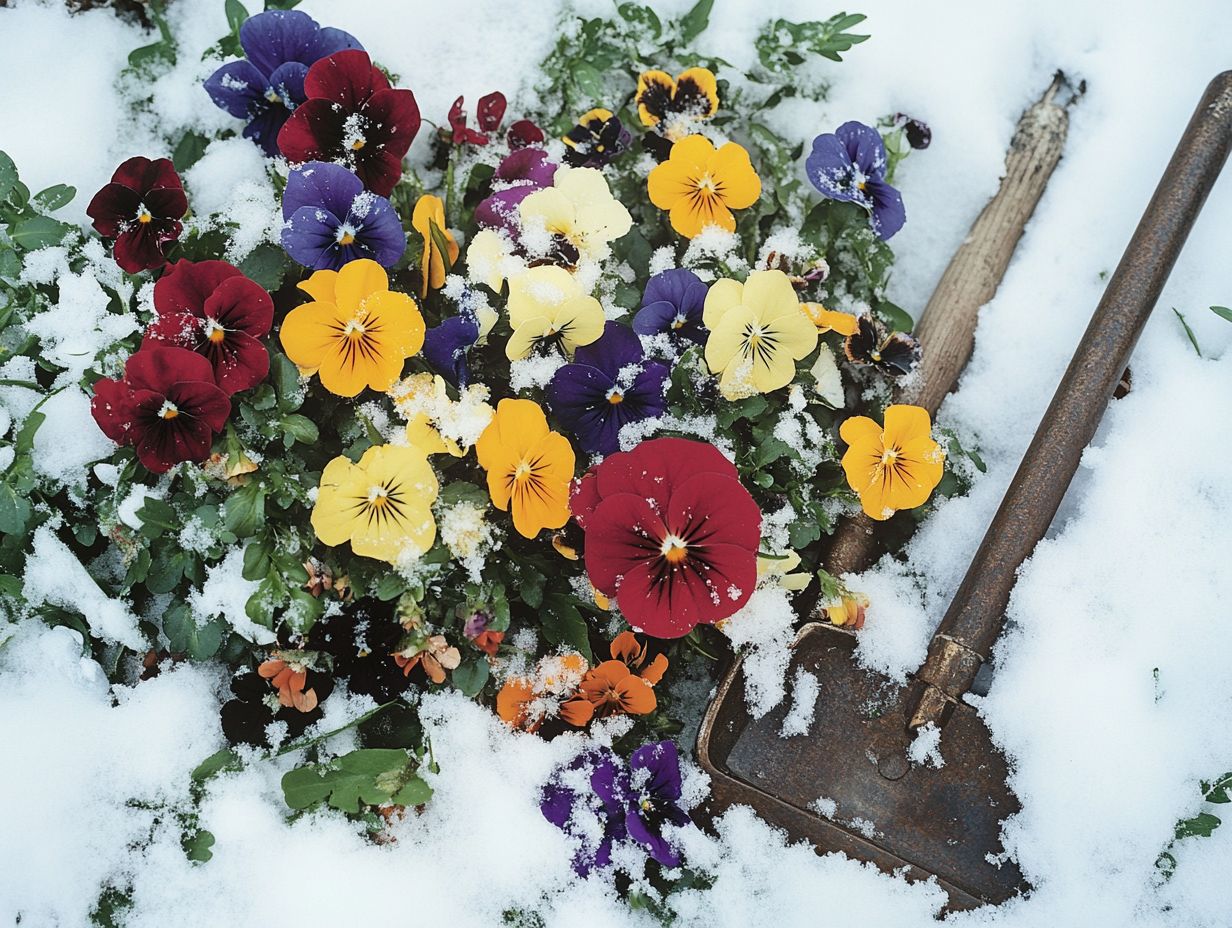
Understanding climate and temperature tolerance is essential for selecting plants for frost-prone areas in your garden. Different plants possess an impressive capacity to thrive in varying climate conditions, which directly impacts their growth cycles and blooming periods.
For example, some annuals, like pansies and snapdragons, demonstrate remarkable resilience against colder temperatures, flourishing in regions where frosty nights are a regular occurrence. These flowers typically prefer cooler climates, thriving when daytime temperatures range from 60 F to 75 F and even withstanding dips below freezing.
Their knack for blooming early in the spring, often before many other plants have made an appearance, makes them a popular choice for gardeners eager to introduce color during the chillier months. By grasping these temperature preferences, you can expertly craft a vibrant garden filled with beautiful flower colors, regardless of the climate you face.
Soil and Sunlight Requirements
The soil and sunlight requirements of cold-hardy flowers significantly influence their overall health and blooming potential. These are critical factors in your gardening tips for success.
These resilient plants thrive in well-draining soil that prevents water accumulation. Excess moisture can lead to root rot, a condition where excess water causes roots to decay a fate no gardener wishes for. Aim for a slightly acidic to neutral pH level, ideally between 6.0 and 7.0, to optimize nutrient absorption and ensure your flowers receive the best care possible.
Sunlight exposure is equally vital. Many cold-hardy varieties bask in full sun, while others prefer the gentler embrace of partial shade. This creates a balanced environment. Direct sunlight can enhance blooming, while filtered light protects delicate blooms from harsh conditions.
This thoughtful approach leads to a vibrant, flourishing garden filled with a pastel flower bouquet that you can take pride in.
Popular Cold-Hardy Flowers
You have a wealth of popular cold-hardy flowers at your disposal, including Iceland Poppy and Sweet Pea. Each is ready to infuse your garden with beauty and vibrancy this spring.
Each flower boasts unique characteristics and growing requirements, allowing you to curate a garden that is both stunning and perfectly suited to your gardening style.
Types of Flowers That Thrive in Cold Temperatures
Many flowers, like Bachelors Buttons, thrive in cold temperatures. They are perfect for enhancing your winter and early spring displays with vibrant colors.
These cold-hardy annuals not only withstand frost but also provide a spectacular array of colors and forms, enriching your landscape when many other plants are simply hibernating. Picture the cheerful pansies brightening up your garden with their vibrant hues, available in shades from deep violet to sunny yellow.
Then there are snapdragons, showcasing their striking vertical appeal and tall spires adorned with blooms in a myriad of colors. These resilient flowers can be cut and arranged into delightful seasonal bouquets, bringing fresh, vibrant energy indoors.
They are not just a feast for the eyes; they’re practical pleasures for any gardening enthusiast.
Tips for Maintaining Cold-Hardy Flowers
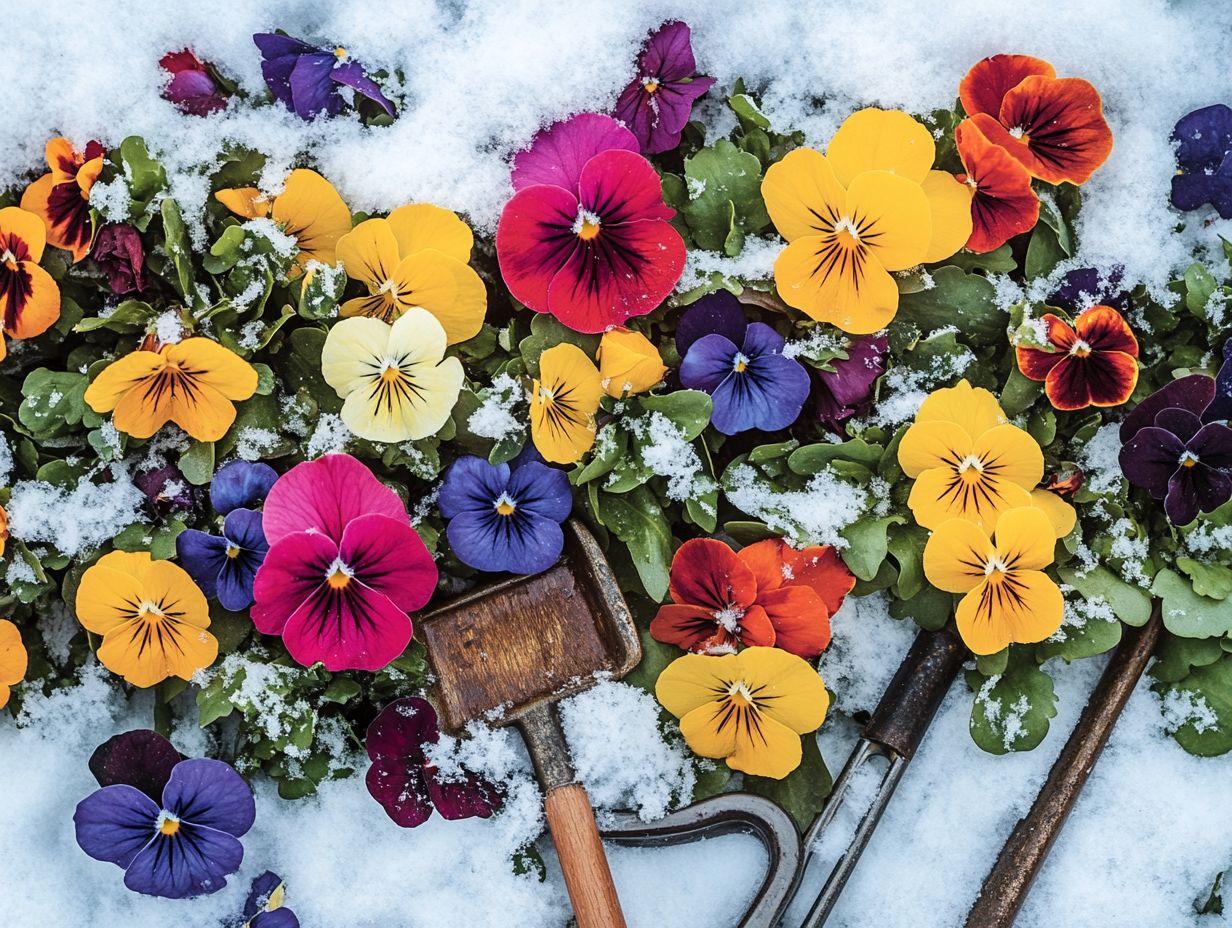
To guarantee the longevity and vitality of your cold-hardy flowers and favorite perennials, it’s vital to implement care and maintenance techniques. If you’re unsure about the best practices, check out this guide on how to start a cold-climate garden that meets their unique requirements.
Proper Care and Maintenance Techniques
Proper care and maintenance techniques are essential for the success of cold-hardy flowers. They allow these plants to thrive even in challenging conditions.
Focus on fertilization, pest control, and winter preparation. Apply a balanced, slow-release fertilizer in early spring to equip your flowers with the nutrients they need for robust growth, minimizing the risk of burns.
Regularly check for pests like aphids and slugs to keep your garden healthy. Utilizing organic pest control methods or introducing beneficial insects, as suggested by experts like Liz Baessler and Tonya Barnett, can help maintain a healthy garden ecosystem.
As temperatures drop, act now to shield your flowers from frost damage. Use mulch or lightweight fabric to ensure they return vibrantly when the growing season arrives, ready to support local pollinators.
Frequently Asked Questions
What are cold-hardy flowers?
Cold-hardy flowers are plants that can survive and thrive in colder temperatures, typically below freezing, making them some of the best cold-weather annuals.
Why should I choose cold-hardy flowers?
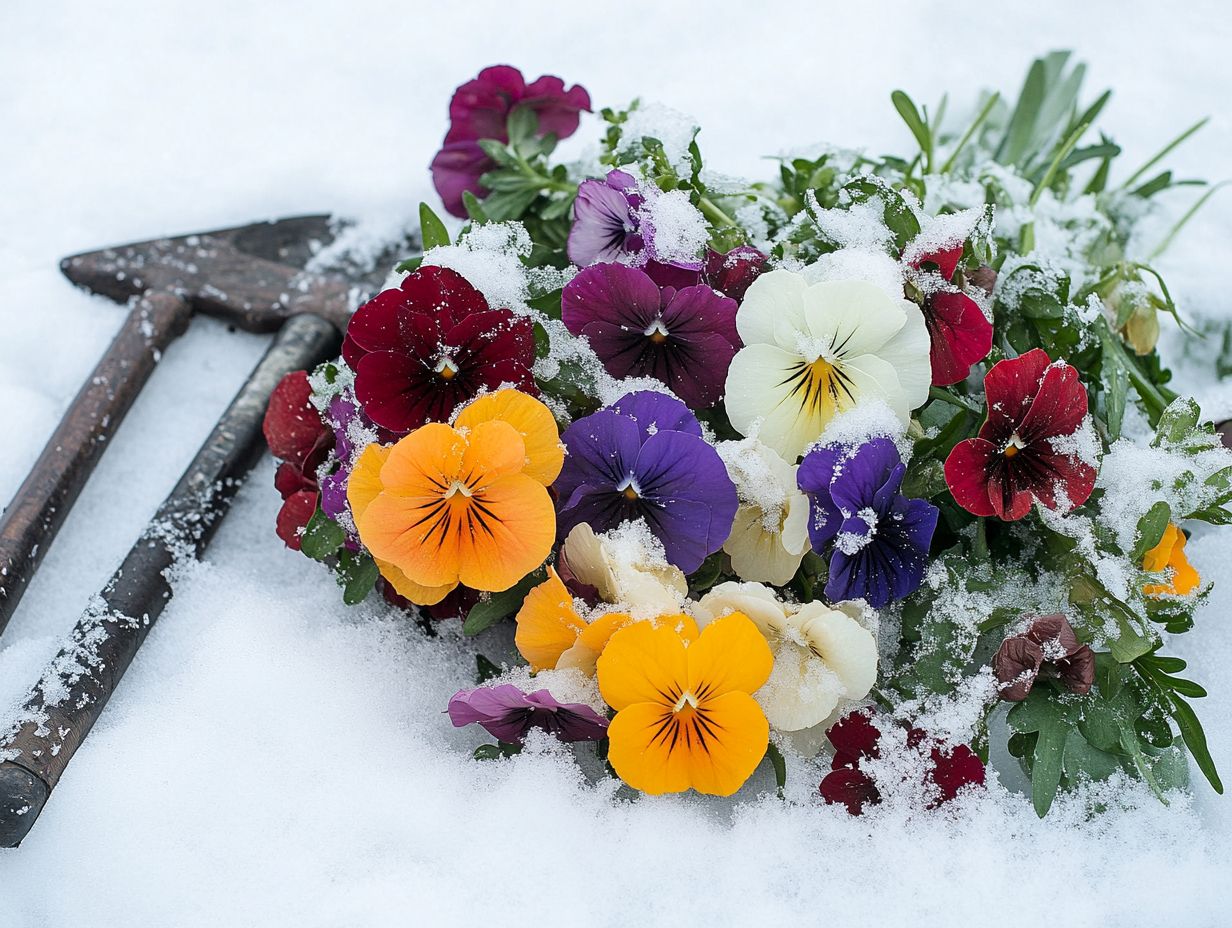
Cold-hardy flowers are a great option for gardeners living in cooler climates. They can withstand harsh winter conditions, and for the best results, consider these top tips for selecting cold-hardy plants to ensure they continue to bloom in the spring.
Start planting these beautiful cold-hardy flowers today and watch your garden flourish!
How can I tell if a flower can survive the cold?
Check the flower’s hardiness zone. This zone indicates the lowest temperatures it can endure.
What are the best cold-hardy flowers for my garden?
Popular choices include pansies, snapdragons, hellebores, and winter jasmine.
Explore local options to find flowers that thrive in your climate!
How do I care for cold-hardy flowers?
Caring for these flowers is straightforward. Water them regularly and ensure they get enough sunlight.
Add mulch around the roots for extra insulation.
Can I grow cold-hardy flowers in containers?
Absolutely! Just ensure your containers are large enough and have good drainage.
During the coldest months, consider bringing them indoors or providing extra insulation.

